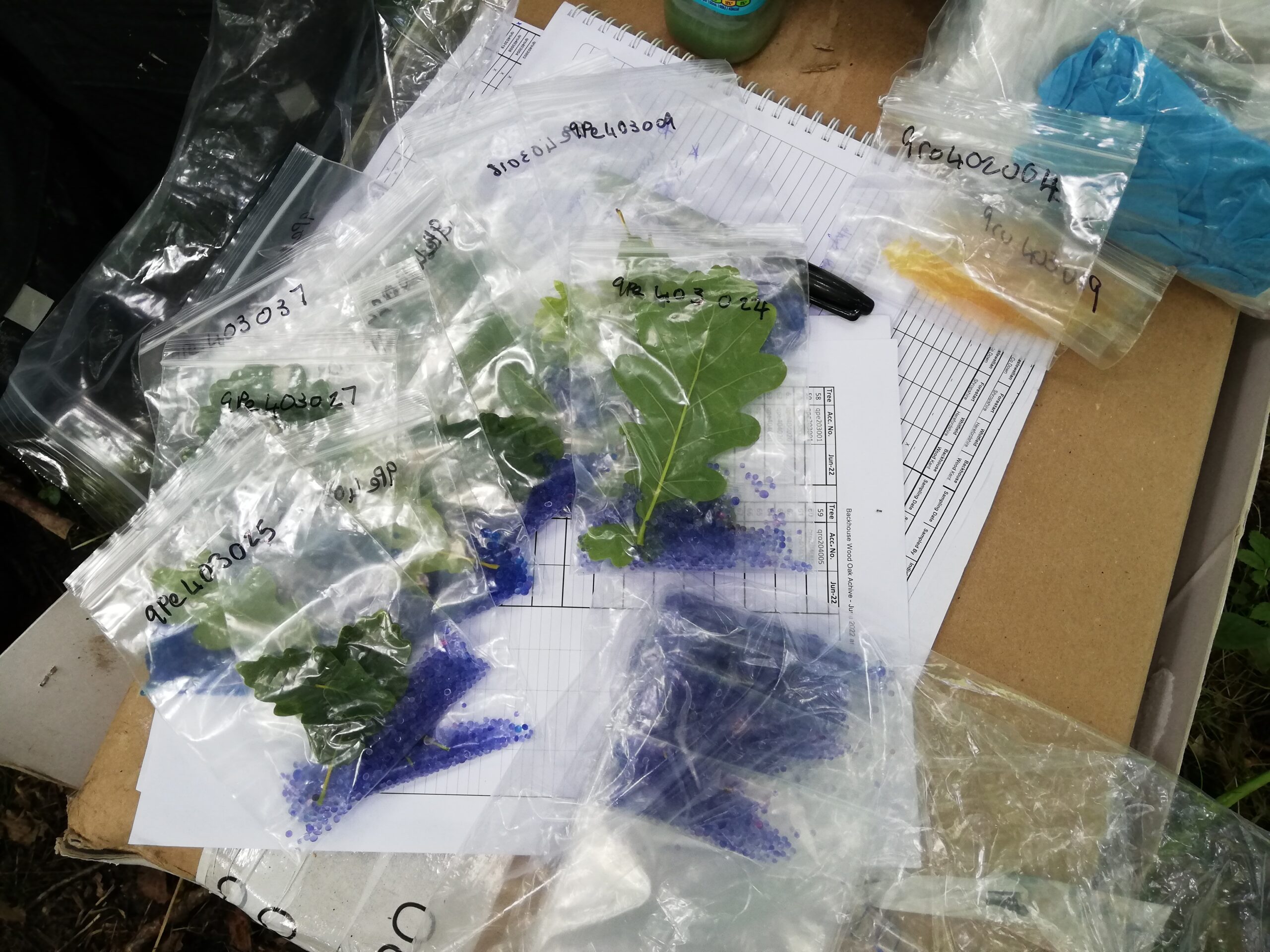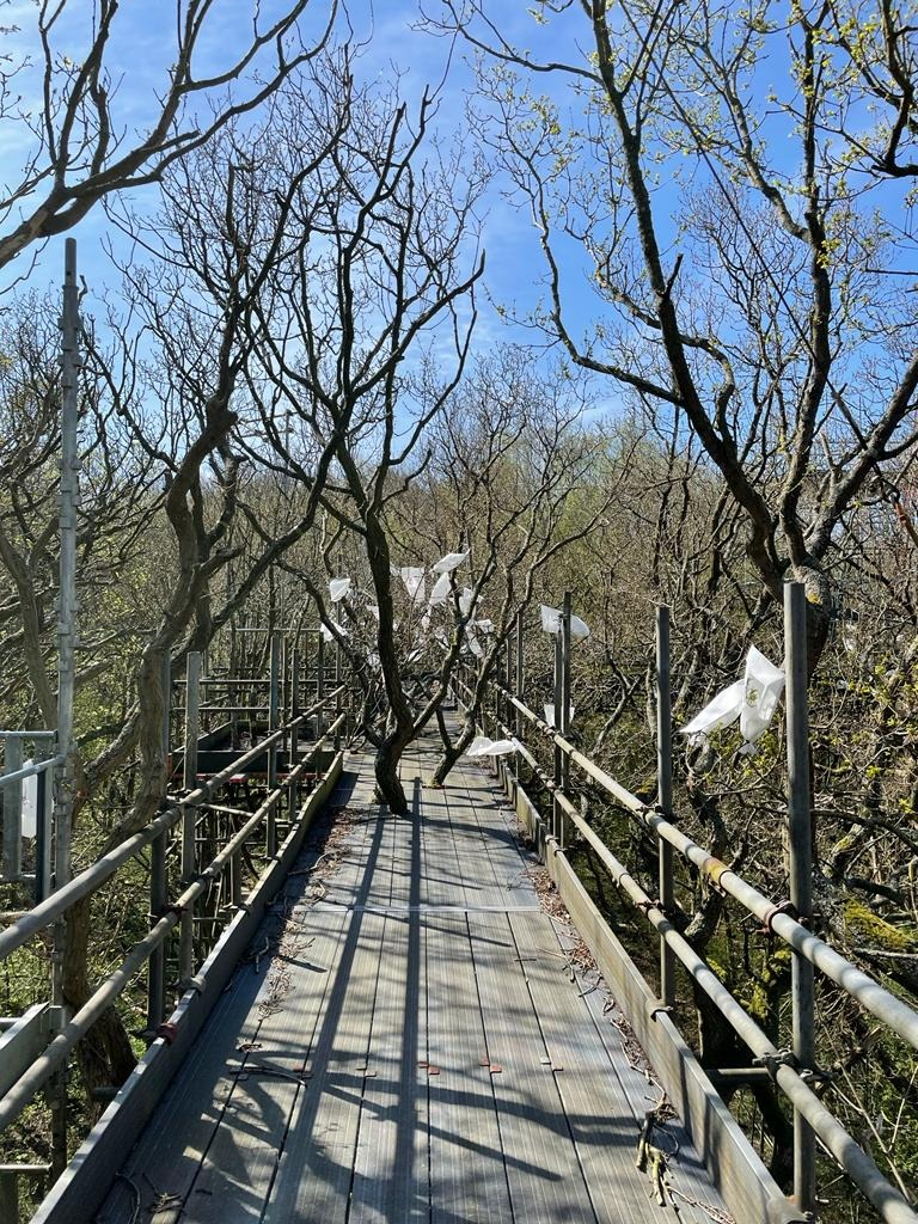It is with great pleasure Future Trees Trust is able to share Ryan McClory, PhD students first published paper on ‘Carbon dioxide enrichment affected flower numbers transiently and increased successful post-pollination development stably but without altering final acorn production in mature pedunculate oak (Quercus robur L.)’.
Ryan has spent the last 3-4 years investigating ‘Drivers of Masting in Oak’ (A mast year is when the oak creates a bumper crop of acorns) as part of a PhD with the University of Reading with full -funding provided by the Patsy Wood Trust and in co-operation with the Future Trees Trust.
This paper published 8th April 2024 written by Ryan McClory and co-authors Richard H. Ellis, Martin Lukac, Jo Clark, Carolina Mayoral, Kris M. Hart, Andrew R. G. Plackett & A. Rob MacKenzie investigates if acorn production in mature woodlands is affected by further increases in CO2.
Concluding that elevated CO2 increased the occurrence of acorns developing from flowers, but the claimed benefit to mature acorn numbers may have been hidden by excessive pre- and/or post-dispersal predation.
There was no evidence that elevated CO2 altered masting behaviour in Quercus robur L. or on the numbers of either enlarged cups or mature acorns, but it did increase significantly the numbers of empty cups, immature acorns, and all evidence of acorns. All categories of reproductive material were affected by year, with Q. robur conforming to fruit maturation masting behaviour.
The authors suggest that elevated CO2 increased the initial numbers of acorns developing, but this was not reflected by the mature acorn counts due to:
(1) higher load of pre-dispersal seed predation in the elevated CO2 plots, and;
(2) post-dispersal seed predators taking mature acorns.
The authors have no evidence currently for a third possible explanation of nutrient limitations under eCO2 preventing full acorn development. The number of immature acorns also increased under eCO2 from being the lowest of the three treatments in the early years to the highest by the final two studied, suggesting that the effects of elevated CO2 may be cumulative—which requires further study.
Flower number was also affected by the interaction of CO2 treatment with year, suggesting elevated CO2 may affect the cycle of resource expenditure and storage, but in this regard the trees appeared to acclimatise to this increase in CO2 quickly.




Leave A Comment